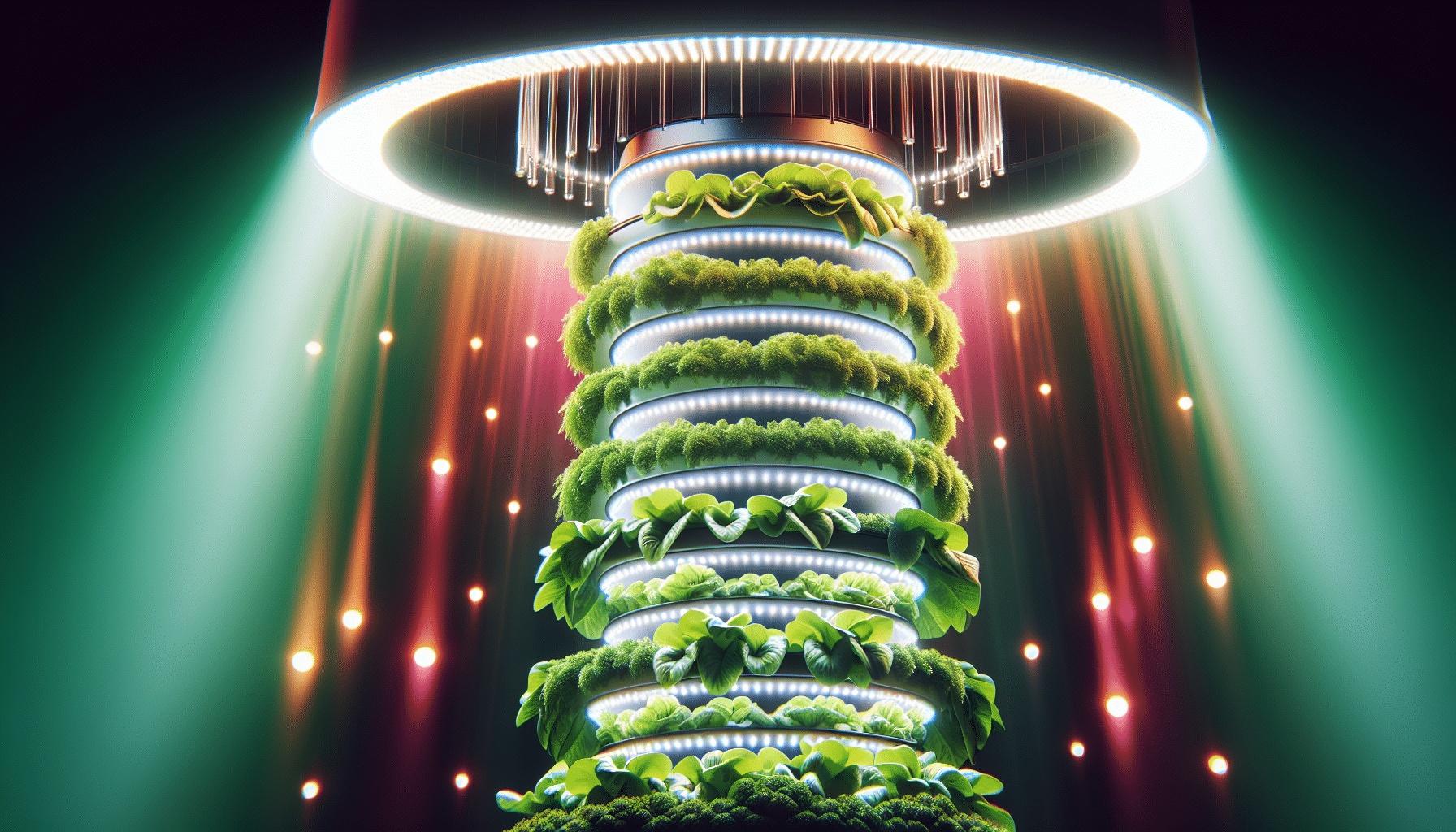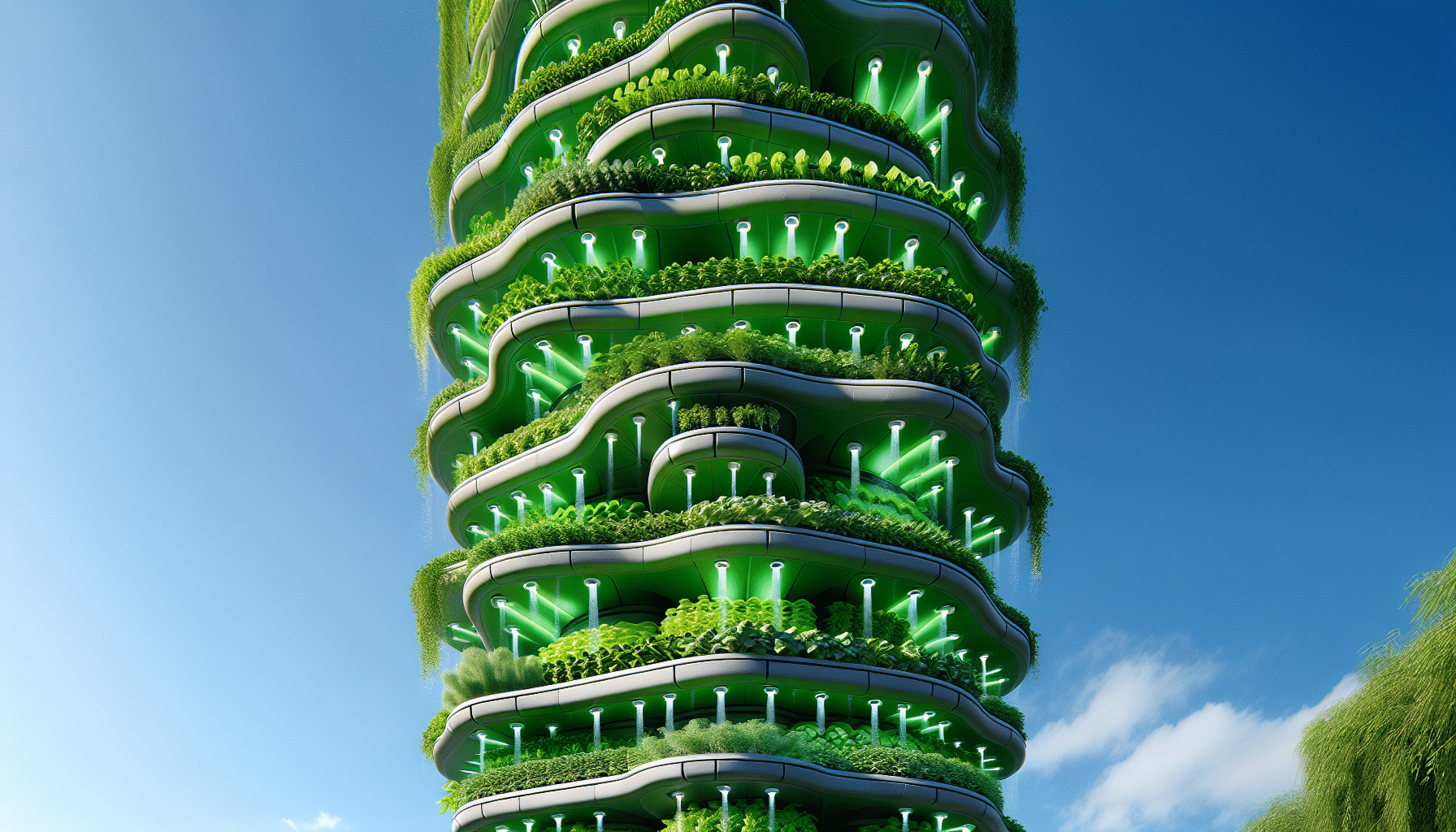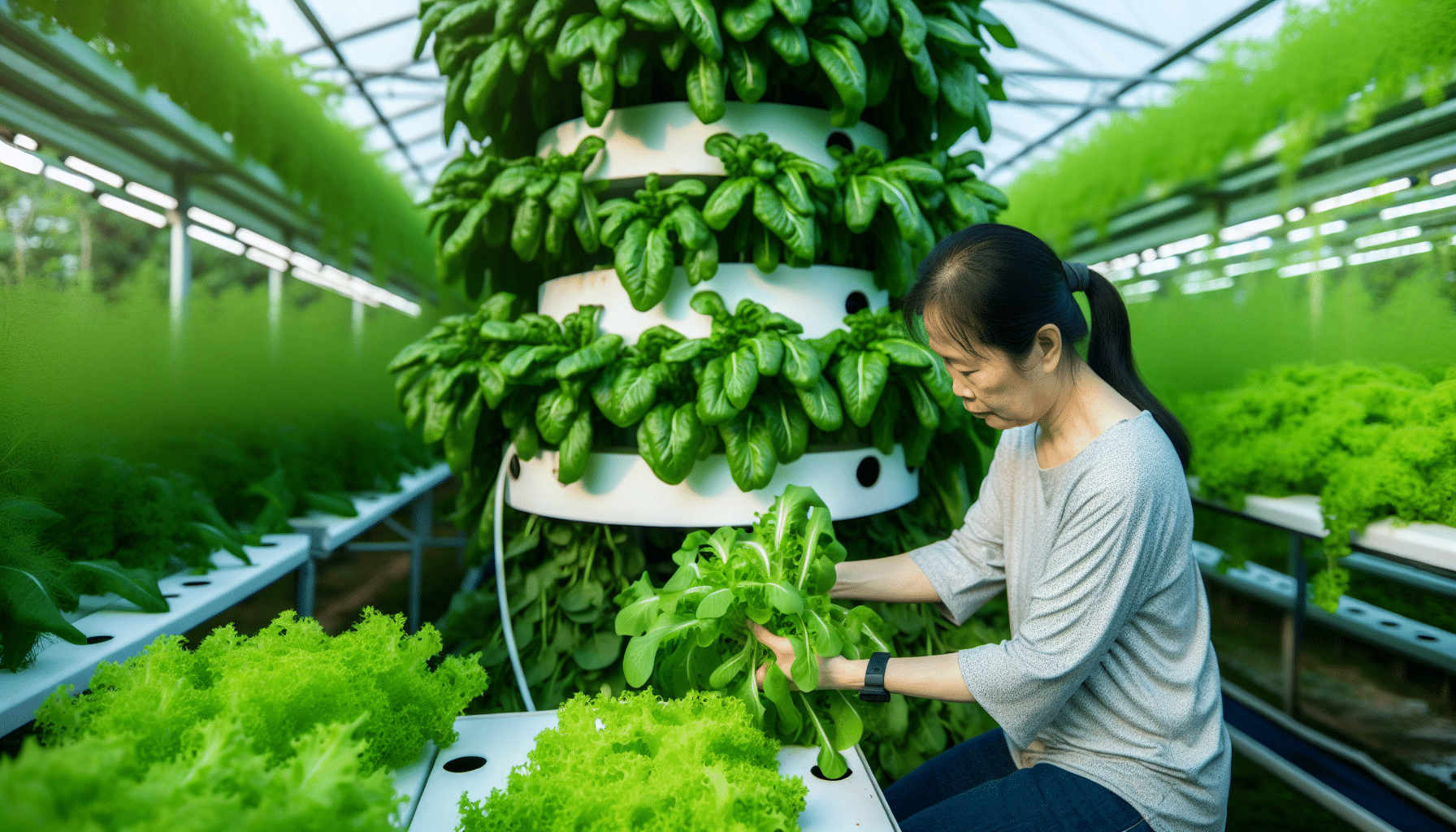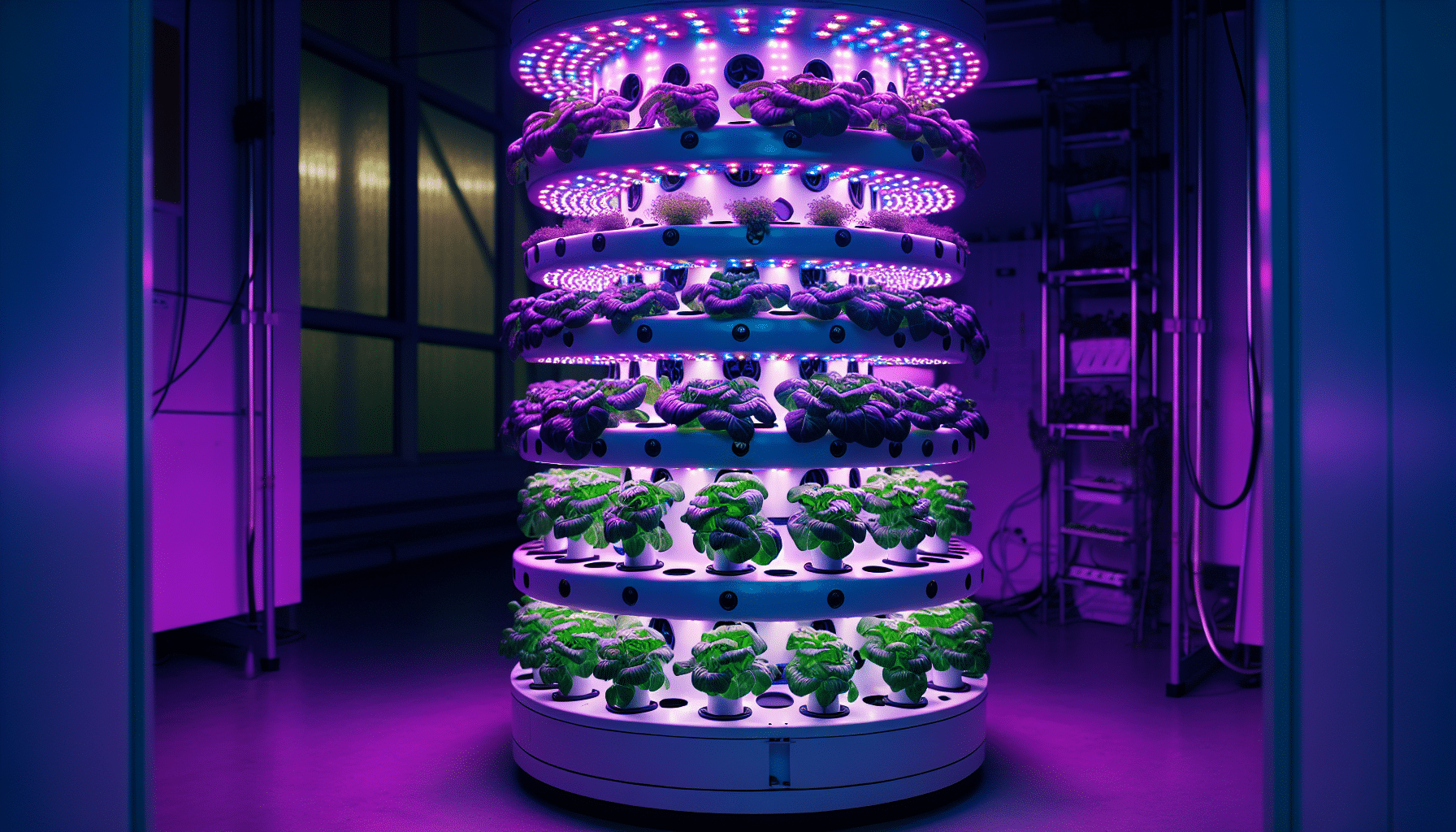Sitewide Sale: Use code Get5Nutra for 5% OFF all products. FREE shipping & 30-Days Hassle-Free ReturnsShop Now
hydroponic tower garden with lights integral to hydroponic garden towers, which allow you to create your indoor gardens and cultivate fresh herbs and vegetables year-round. This technology gives the power of simulated sunlight for optimized plant growth, no matter what seasons or weather conditions may be occurring outside! Setting up one’s very own tower with LED grow lights is a simple process that can help any gardener reap the delicious fruits of their labour.
LED grow lights are imperative in hydroponic gardening, providing the right spectrum and intensity for plant growth, energy efficiency with reduced electricity consumption, and an extended lifespan for durability.
Hydroponic garden towers enhance space utilization through vertical farming, employ food-grade plastic for safety, and integrate effective drainage systems to prevent waterlogging and nutrient loss.
Growing in hydroponic towers requires careful management of seed starting, nutrient solutions, and harvesting techniques to optimize plant growth and yield, with attention to proper lighting and regularly changing the nutrient solution.

LED grow lights are an essential element for any hydroponic growing system. They provide a light resembling natural sunlight and emit specific wavelengths needed to foster effective photosynthesis by plants. These wavelengths consist of red and blue hues that can be adjusted in intensity to the optimum point of light saturation desired by the plant’s growth requirements.
Not only do LED grow lights allow for the proper spectrums necessary to ensure ideal development, but they also generate minimal electricity costs compared with other lighting systems due to their high-efficiency level when providing adequate intensity levels into these types of gardening setups. Thereby allowing you to cultivate your vegetation year-round without having to worry about costly energy bills each month.
When it comes to plant growth, light spectrum and intensity in hydroponics systems are vital factors. Both blue and red wavelengths offer optimum conditions for these plants. While the former helps promote robust foliage development, the latter is necessary to ensure successful flowering and fruiting. A great way of obtaining all-round benefits across different stages of the process is through full-spectrum LEDs that imitate natural sunlight.
To this, brightness also has a major influence on photosynthesis – which means sustenance for your crops – as well as stem elongation rate, leaf pigmentation levels etc. It’s advisable then to use tools like PAR meters or quantum sensors placed at canopy level when precisely measuring light strength within a hydroponic setting.
For indoor gardening, LED grow lights are the top choice due to their energy efficiency. They typically require anywhere from 10-125 watts of power and consume 40% less electricity than other light options available on the market today. This means they have a much shorter payback period compared to HID (high-intensity discharge) lamps and offer greater cost savings while being more environmentally friendly for hydroponic gardens like towers or vertical farms. Plus, with LEDs offering higher efficacy rates – i.e., delivering better quality results at lower levels of input wattage – it can be just as efficient in terms of output if not more so! Making them great lighting solutions for any kind of setup you could think up related to plant growth indoors that needs specific requirements met when it comes down to light source selection along with conserving your money while doing so simultaneously too!
Also Read:
LED grow lights possess a durability that offers an optimal growth environment for plants and preserves precious resources over the long term, with their life span ranging from 50,000 to 100,000 hours. This is significantly greater than traditional garden lighting options which do not provide such reliable coverage throughout each year. When you include these LED light sources in your hydroponic tower setup, you can expect them to last multiple years while offering reliable illumination necessary for strong plant development and maintenance of a healthy growing sp

Hydroponic garden towers are a great option for indoor gardening, offering many features to maximize plant growth and save up to 90% of space. Fabricated using safe food-grade materials that have been UV stabilized as well as BPA-free plastic, these systems guarantee the safety of both plants and human consumption from any leaching chemicals in the nutrient solution. Space-saving properties mean there is less water usage needed along with reduced labour costs, which ultimately prevents soil degradation while maximizing crop yields per square foot used for farming purposes.
For the health of both plants and people, Tower Garden HOME utilizes food-grade plastic to construct its hydroponic towers. This kind of material is composed primarily of BPA-free PET (Polyethylene Terephthalate) and HDPE (High-Density Polyethylene), as these have been found to adhere to FDA safety regulations. All components are also USDA approved, UV stabilized for long-term use, thus ensuring a superior quality product when it comes time for gardening purposes or creating homemade produce.
It’s important to substitute food-grade plastics with other materials while constructing tower gardens. One must look into which supplies may be manufactured using nonfood grade ‘mould release agents’ since they could potentially introduce toxic chemicals into edible items cultivated within the garden beds themselves!
Utilizing vertical space in hydroponic gardening offers notable advantages, including reduced risk from pests and more efficient use of available space for larger numbers of plants. This also helps minimize food miles as well as the environmental impact through decreased carbon output while optimizing yield per acre by taking advantage of higher levels. A tower designed for this purpose can hold between 30 to 80 plants at any one time, which makes it an incredibly effective solution.
Special lighting setups have been engineered to ensure superior light distribution amongst all veggies within the structure so that maximum photosynthesis is achieved regardless of where they are situated inside the garden tower. The technology behind these systems minimizes shadows cast on each plant, encouraging optimal growth efficiency overall!
All things considered, optimized usage of vertical planting methods such as towers offer improved yields with less vulnerable environment compared to conventional ground growing strategies making them invaluable tools when used properly.
In hydroponic towers, proper drainage is paramount to avoid root rot and maintain ideal nutrient levels. This necessitates the use of an integrated draining system that incorporates a drain tube for regulation of water level as well as the elimination of excess moisture plus nutrients from the container which can be suspended at the top with the directed flow into one tank used to collect nutrients. Such customizable design elements are key components for optimizing efficiency within these setup types in terms of preventing pooling around roots while enhancing successful uptake rates when it comes to nutrition intake overall.

Growing leafy greens and herbs in hydroponic systems can be an exciting process. To start this journey, the recommended steps for sowing seeds include soaking a rock wool cube of water for at least 30 minutes before adding the number of corresponding seeds to it and then burying them with vermiculite. These plants should also receive adequate sunlight or 14 hours of exposure from grow lights positioned optimally apart from each other.
The germination stage which occurs over a week up to ten days requires putting these sprouted vegetables into nutrient solutions until approximately two weeks when they are ready to transplant. The solution should replenish itself monthly so that fresh liquid mixed with nutrients replaces old substances consumed by your developing plant babies!
By following such instructions one is bound to reap success during their experience cultivating greens and growing aromatic herbs through hydroponics as well as guarantee vigorous growth amongst all types of vegetation like lettuce, spinach, sage & more!
For initiating successful seed growth in hydroponics, the best approach is to place 2-3 seeds per starter plug of a germination tray. Seeds that are particularly suitable for this type of cultivation include basil, beetroot, chard, amaranth lettuce, spinach, cucumber and tomatoes. Issues concerning hydroponic systems such as pests root rot mold development leaf issues leakage inadequate lighting or fertilizer can be averted through diligent practice with cleanliness adoption of natural insecticides keeping appropriate moisture levels providing adequate light and having an accurate balance when it comes to nutrients required for plant growth respectively.
For the best growth of plants in hydroponic systems, it is imperative to keep nutrient levels regulated. The concentration of nutrients present in a system plays an essential role when it comes to plant vigour and progress by offering them necessary nourishment, allowing for diffusion of ionic nutrition into root structures and boosting kinetic energy which encourages superior development. Appropriately managing nutritive solutions calls for utilization programs that entail recipes with full fertilizers as well as tools that enable measurement adjustments on alkalinity pH balance. Fundamental aspects so successfully increasing can be achieved within these environments.
In regular units designed specifically using hydroponics techniques, require changing out nutritional mixtures approximately every two or three weeks ensuring that the plants inside net pots get the fresh sustenance needed for their proper blooming habits maintained properly over extended periods.
Growers of hydroponic systems such as tower gardens can reap the rewards from harvesting their own vegetables and herbs. Leafy greens like lettuce, kale, arugula, mustard or spinach are ready to be collected once they reach maturity for a year-round harvest. Picking stems with few leaves is suggested when it comes to herbs such as thyme or oregano in order to get optimal yield according to process guidelines of the plant’s growth stage and species given by Tower Garden Plant Guides.
The best way these garden towers work is through staggered harvesting which ensures continuous supply. Although some growers may choose multiple plants at the same time leaving them for an additional collection afterwards.
Hydroponic garden towers are a popular type of hydroponics, setting themselves apart from others through their water and nutrient efficiency. Without having to rely on soil for the roots to absorb nutrients, these systems require minimal effort in terms of maintenance and upkeep. Many customers rate their experience with towers growing very highly due to competitive pricing options as well as aesthetically pleasing designs that make use simple. Water wastage is greatly reduced too. Some reports have suggested losses are no higher than 1.5%.
Support services offered by suppliers come alongside this convenience, phone assistance can be accessed should any questions arise while pots within the system may be taken out easily for cleaning purposes or more thorough checks if required. Tower users also benefit from exceptional customer care should they need it too., bringing all-round satisfaction when using such gardens.
In summary, hydroponic gardening towers provide an easy way to get into home hydroponics without compromising cost or performance levels – making them ideal choices for those starting in horticulture projects.
Hydroponic towers, such as ZipGrow Towers, are designed to drastically reduce water usage when compared with traditional soil gardening. Speaking, these systems consume roughly 80-90% less daily than plants grown in the ground. This equates to 1 – 2 gallons (approx. 4 – 8 litres) for leafy greens and herbs specifically. Mulches and drip emitters facilitate low tillage composts that recycle nutrient-rich runoff back into circulation within the system thereby minimizing wastage of both nutrients and water while allowing users greater control over their environment’s conditions at large enhancing productivity overall.
To keep a hydroponic garden tower in tip-top condition, routine maintenance and certain tools are essential. Cleaning the reservoir with a sponge is of utmost importance – along with weekly checks on pumps and tubes as well as daily inspections of basic plant requirements such as nutrient levels. The mitre saw, tape measure, ruler drill bits etc. can provide you with all the necessary hardware for maintaining your vertical farm. Disassembling grow pots also helps enhance manageability making it possible to clean them regularly while trimming plants or harvesting frequently will not only give produce freshness but increase life expectancy significantly when coupled with regulating water level & pH balance while ensuring timely monitoring of these vital components using timer systems respectively.
Good customer service and high levels of satisfaction are essential to ensure that hydroponic gardening is a successful experience. The importance of quality support is especially highlighted for people who use hydroponic garden towers, as it provides them with information on how they can cultivate their own plants properly. Common issues related to this type of system range from not having enough light or pump failure to plant diseases, incorrect nutrient solutions ratios, root rot or mould growth in the leaves and pests which bring about higher humidity levels than desired along with improper lighting strategies. To help fix these problems one has to take specific troubleshooting approaches including altering either light intensity or nutrition amounts combined plus treating any disease present alongside maintaining hygiene within the tower-system itself.
Gauge user happiness companies working within this industry measure performance indicators such as net income profit margin among others together with analyzing how many customers remain loyal over time productivity factors are included too at times if possible/relevant. To strengthen client care, every company should set up an online presence get actively involved via social media accounts be inquisitive when needing to gather feedback try to be positive meanwhile displaying value-connected product offers mention often a chance to give an opinion regarding the overall impression of gardening solutions involving specialised pumps lights nutrients helping flowers grow better healthier faster but still safely like usual way outside soil-less environment inside greenhouses now likewise everywhere else though otherwise.
Assembling a Tower Garden, such as the HOME and Flex models, for your hydroponic system doesn’t need any tools. You will only need an area with a minimum of 5 to 6 feet in height and a spacing of around 8 inches between leafy greens or lettuce plants. After that is done, comes the planting process – soak rock wool cubes in water for at least half an hour before adding seeds into it followed by covering them up with vermiculite. Keep this moisture-rich soil mix always moist either through sun exposure or using grow lights placed 2-30 inches away from each plant based on variety requirements. Lastly, one must ensure that the LED light source turns ON/OFF alternately every 12 hours when cultivating crops this way!
Setting up a hydroponic garden tower, like the Pro Shelf or the NFT-Hydroponic Tower Garden with Lights is hassle-free and doesn’t require any tools. You just need a height of 5 to 6 feet with a spacing of about 6 to 8 inches for leafy greens such as lettuce. For your safety when putting together this type of system, you must take precautionary measures. Prevent water leakage, sanitize the tower after each crop cycle and keep an eye on pH/EC levels based on what crops are being grown in the tower. With these guidelines followed correctly, you can assemble a safe but also highly effective hydroponic garden tower setup!

When your tower is set up, it’s time to start planting the seeds. The best method for doing so in a hydroponic system includes soaking a rock wool cube with water for 30 minutes and then adding the seedlings into it before covering them in vermiculite while keeping the contents of the cubes moist. Lastly, this should be placed near direct sunlight or under LED grow lights that are specifically tailored to plants grown in such conditions.
Concerning those LED lights, they need to be situated at various distances from one plant to another ranging anywhere between two inches and 18-30 inches away depending on size of said specimens as well their stage during growth process (seedling needs more light than mature ones). This type of setup calls upon 12 hours intervals when LEDs have been switched ‘on’ versus the same amount allocated out there where they remain off. Lighting schedule usually changes slightly if we’re talking about young sprouts since here an ideal state implies lamps burning brightly but only temporarily over course of eighteen followed by six hours letting dark rule unchallenged instead afterwards.
In a hydroponic tower, it is important to keep track of the growth and health of plants. To do this correctly, one needs specific tools such as soil moisture sensors, and environmental monitors for humidity levels, CO2 concentration and light intensity readings. Imaging systems as well as water quality monitoring equipment. To maintain the pH balance in these systems, white vinegar or citric acid can be used to reduce its level while baking soda could be utilized if an increase is necessary, though using a calibrated probe together with a reliable pH meter guarantees accuracy when making adjustments. Poor development from plants may signify that lighting alterations must take place including their position or strength which will contribute greatly towards successful plant progress overall.
Hydroponic garden towers offer an innovative and sustainable way to cultivate fresh vegetables, herbs, and more indoors year-round. These structures are equipped with LED grow lights that mimic natural sunlight for the plants to receive optimum spectrum intensity for growth. Hydroponic systems are very energy efficient due to their vertical design which increases space efficiency while also conserving water usage within indoor gardening scenarios. Whether you’re a veteran or a newbie gardener, setting up your hydroponic tower will bring satisfying outcomes as well as being relatively easy on maintenance!
Hydroponic towers are advantageous in numerous ways, such as conserving water and providing an educational opportunity. They can also be beneficial for seniors or those with mobility issues by removing the need to bend down when tending gardens. These containers eliminate any worries regarding tilling soil or applying hazardous chemicals since it is all done via the tower system.
An LED grow light is the optimal choice for illuminating hydroponic towers due to its ability to be suspended vertically in between each tower, thereby removing any potential shadowing and allowing adequate lighting.
Assembling a hydroponic garden tower does not necessitate the use of any special tools, as it is an uncomplicated process. All that needs to be done is simply putting all the pieces together – no instruments are required for this task. Just follow instructions in order to construct.
If you notice your plants looking dull or fading to yellow, having lengthy and weak stems, or simply not progressing with growth, then it might be a sign that they’re lacking light. Adjustments in the illumination of your garden may therefore need to take place. Staying aware of the colouring and size development of vegetation can help determine whether more exposure to lighting is necessary for thriving conditions.
The hydroponic garden tower is preferred by many growers due to its efficiency in water and nutrients, low maintenance needs, as well as the high levels of customer service they receive. Compared to other systems available, it stands out for having these advantages which make using one a great choice.
Grow 100 planting sites, monitor ph levels, water temperature, water levels, and control light and water cycles.
© Copyright 2024 Nutraponics. All Rights Reserved.